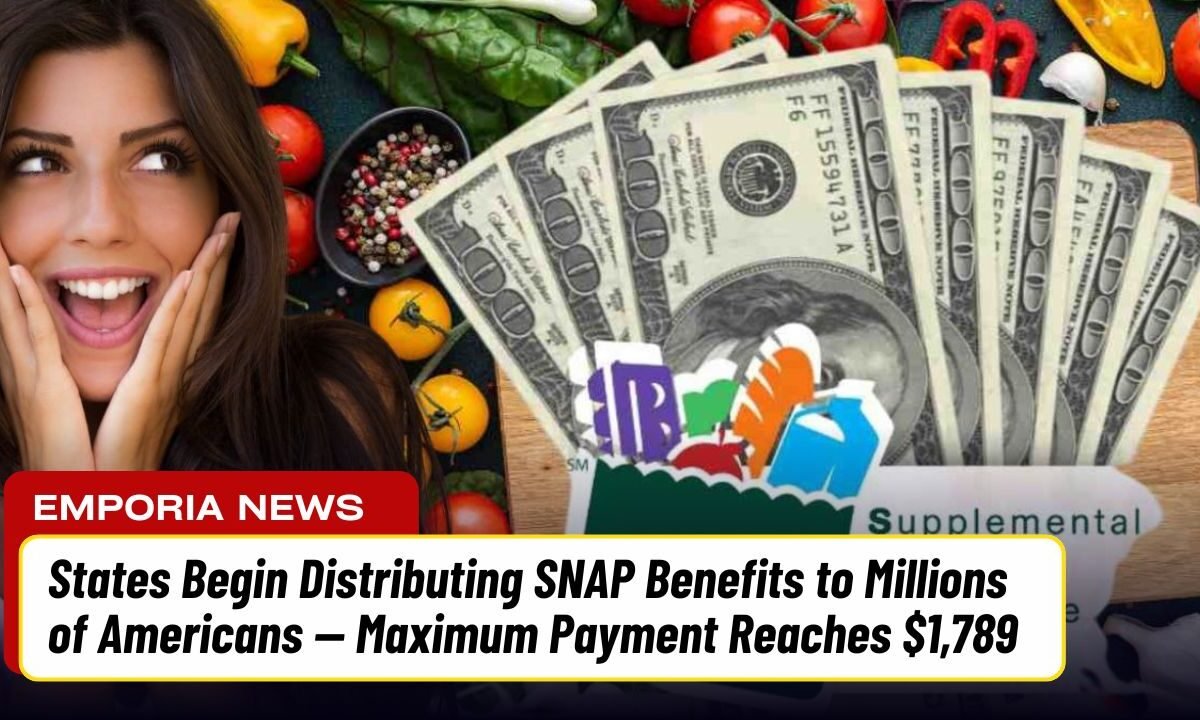A federal appeals court has upheld a ruling requiring the Trump administration to distribute the full Supplemental Nutrition Assistance Program (SNAP) benefits for November 2025, even during the ongoing federal government shutdown.
Payments began reaching millions of households across several states before a late-night intervention by the U.S. Supreme Court introduced new uncertainty.
Full SNAP Payments Resume Across Multiple States
On Friday, residents in California and several other states began receiving their full SNAP food assistance payments after the appeals court refused to temporarily block an earlier order.
Governor Gavin Newsom confirmed that “food benefits are now starting to flow back to California families,” ensuring relief for thousands who had been uncertain about their food assistance status.
In a memo sent the same day, Patrick Penn, Assistant Secretary for Food, Nutrition, and Consumer Services at the U.S. Department of Agriculture (USDA), directed all regional SNAP offices to “complete the necessary processes” so that states could issue full payments immediately.
California was one of 22 states that filed a lawsuit claiming that the administration’s decision to withhold benefits—known as CalFresh in California—during the shutdown violated federal law.
By Friday afternoon, officials from California, Wisconsin, Oregon, Kansas, New Jersey, and Pennsylvania confirmed that eligible households had begun receiving their full November benefits. Other states expected payments to arrive by the weekend or early next week.
Supreme Court Issues Stay — Uncertainty Returns
However, by Friday night, the legal landscape shifted again. The Trump administration appealed to the U.S. Supreme Court, and at 9:17 p.m., Justice Ketanji Brown Jackson issued a temporary stay, granting the appeals court time to review the case in full. This move left open questions about whether benefits would continue uninterrupted.
According to a November 8 update from the California Department of Social Services, many recipients had already received their November SNAP/CalFresh benefits, confirming they were valid and could be used without restriction.
Updated Maximum SNAP Benefit Amounts (2025–2026)
Effective October 1, 2025, through September 30, 2026, the USDA adjusted the maximum monthly SNAP benefit amounts to reflect changes in the cost of living. These apply to the 48 contiguous states (including California) and the District of Columbia.
| Household Size | Maximum Monthly Amount |
|---|---|
| 1 | $298 |
| 2 | $546 |
| 3 | $785 |
| 4 | $994 |
| 5 | $1,183 |
| 6 | $1,421 |
| 7 | $1,571 |
| 8 | $1,789 |
| Each additional person | +$218 |
These amounts represent the maximum possible benefit, with actual payments determined by household income and deductible expenses. Households in Alaska, Hawaii, Guam, and the U.S. Virgin Islands have separate calculations.
Income Eligibility Limits for SNAP (Effective 2025–2026)
Below are the monthly income limits used to determine eligibility for SNAP benefits. Limits are based on Federal Poverty Level (FPL) standards.
| Household Size | Maximum Gross Income (130% FPL) | Maximum Net Income (100% FPL) |
|---|---|---|
| 1 | $1,696 | $1,305 |
| 2 | $2,292 | $1,763 |
| 3 | $2,888 | $2,221 |
| 4 | $3,483 | $2,680 |
| 5 | $4,079 | $3,138 |
| 6 | $4,675 | $3,596 |
| 7 | $5,271 | $4,055 |
| 8 | $5,867 | $4,513 |
| Each additional person | +$596 (gross) / +$459 (net) |
Households with elderly or disabled members may qualify under higher income thresholds (up to 165% of FPL). For individual assistance, applicants are advised to contact local county offices for accurate benefit calculations.
The federal appeals court’s decision has temporarily ensured that millions of Americans receive their full SNAP benefits amid the government shutdown, providing crucial relief to low-income households.
However, the Supreme Court’s stay means that uncertainty persists, leaving states and families waiting for a final resolution. For now, California and several states continue distributing November payments, ensuring that families have access to essential food assistance as the legal battle continues.




